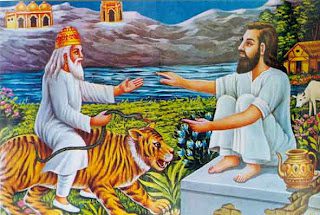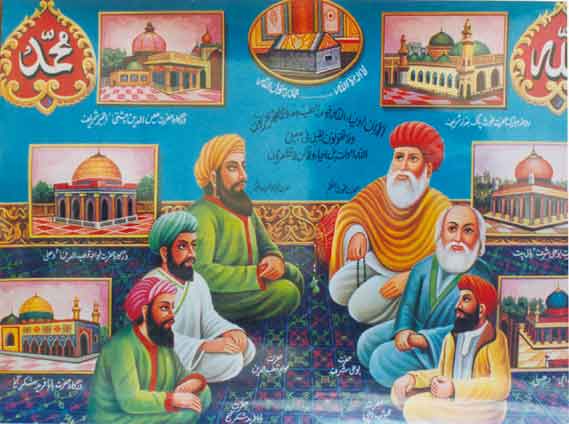Muslim Societies in South Asia Seminar Series: Muslim Devotional Art in India
Sept. 27, 2012 – Yousuf Saeed, independent scholar and filmmaker discussed his research in Muslim Devotional Art in India at a seminar co-sponsored by the South Asia Initiative and Prince Alwaleed Bin Tilal Islamic Studies Program. Ali Asani, Professor of Indo-Muslim and Islamic Religion and Cultures, FAS and Director of the Prince Alwaleed Bin Tilal Islamic Studies Program chaired the seminar.
Through his work with visual images, Saaed has examined religion as it is understand at the very grassroots level. How is Islamic religious devotion expressed as popular art for the masses? The research context is popular visual culture on the streets of India – on billboards, posters, calendars – often taken from the markets around Sufi shrines.
One of the main questions Saeed set out to answer was where the popular image of Mecca came from in Islamic art. He traced one of the earliest photographic prints of Mecca to a photo by H.A. Mirza and Sons, which Asani discovered in the Semitic Museum at Harvard. Early popular Islamic art very specifically avoided human figures: one of the first prints that Saeed found of Mecca in popular Islamic art, by Raja Ravi Varma, was almost an exact copy of a photograph of Madinah – minus all human figures.
 Saeed also examined images of Sufi saints. These posters and calendar prints, printed extremely cheaply and sold for next to nothing, often crudely drawn or cut and paste from other images, bear a striking resemblance to Hindu imagery of the time. One photo shows the face of a Sufi saint cut and pasted onto a Hindu figure.
Saeed also examined images of Sufi saints. These posters and calendar prints, printed extremely cheaply and sold for next to nothing, often crudely drawn or cut and paste from other images, bear a striking resemblance to Hindu imagery of the time. One photo shows the face of a Sufi saint cut and pasted onto a Hindu figure.
Calligraphy, often depicting quotes from the Quran, but also in the form of popular amulets and good luck charms occupies a major place in Muslim devotional art in India as well. Many artists turned to motifs such as trees or nature scenes, rather than depicting human figures. Saeed pointed out that for much of this very popular art in India, many of the printers and distributors were actually Hindu—and so therefore more likely to keep a safe distance from depicting human figures. Lastly, Saeed looked at the trend to depict more ‘stock’ Islamic images, including figures in pious prayer, which both respond to and contribute to stereotypes about Muslims as believers.
Saeed’s work in visual culture is part of a larger collective, Tasveer Ghar, A House of Pictures. Visit their website and learn more about their work with visual culture in South Asia.

